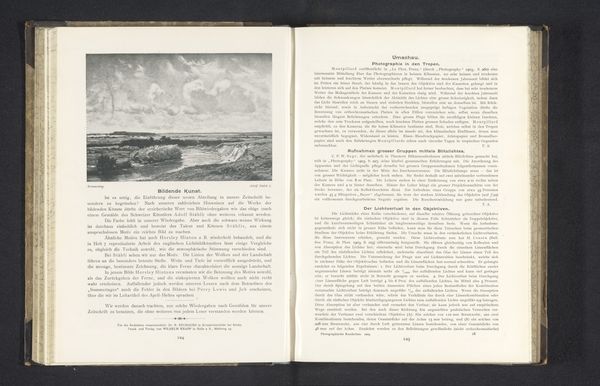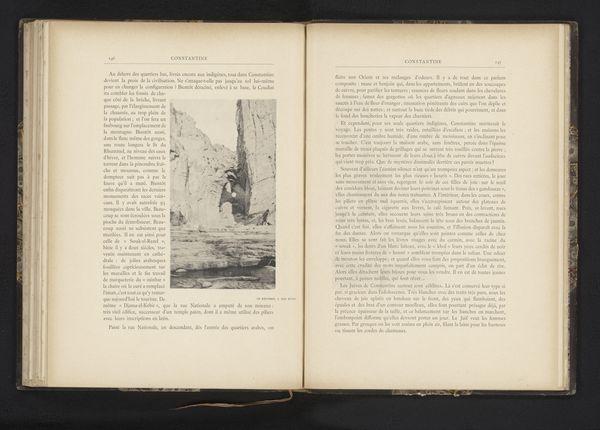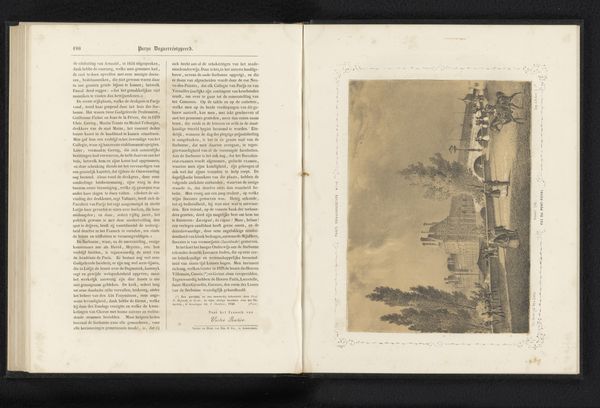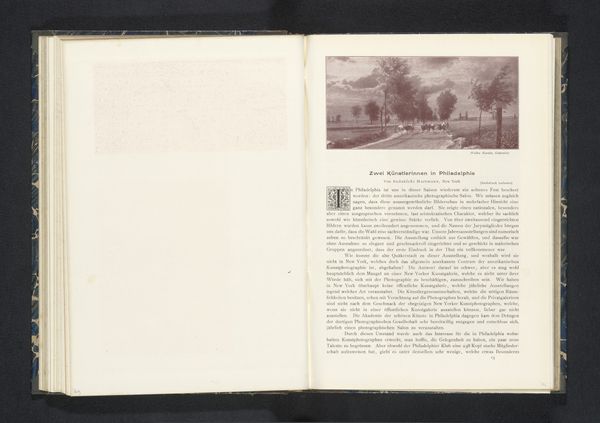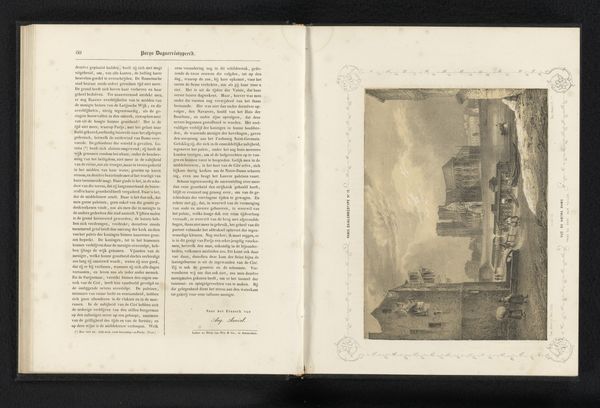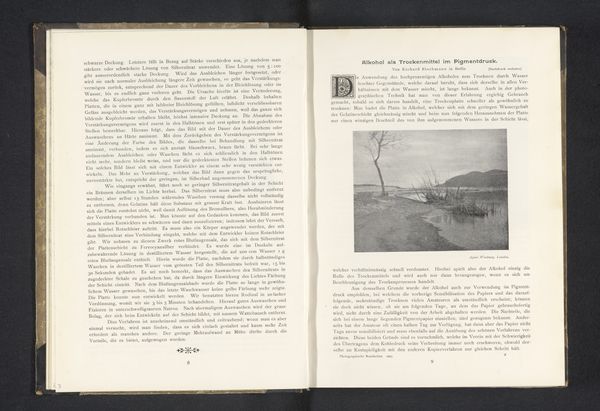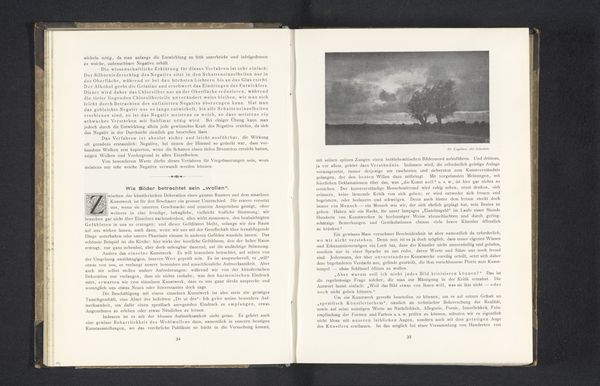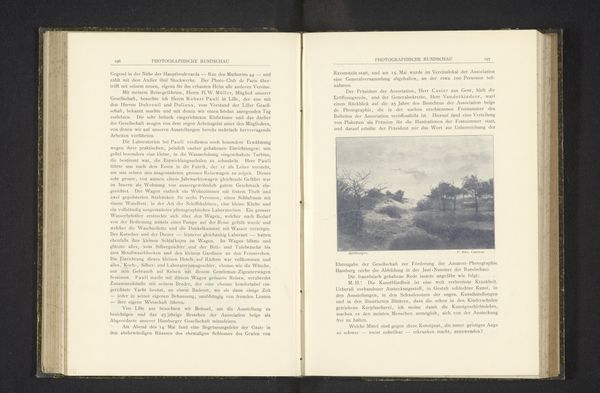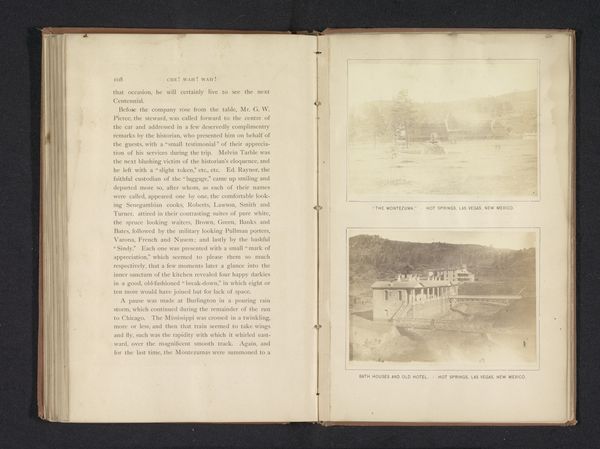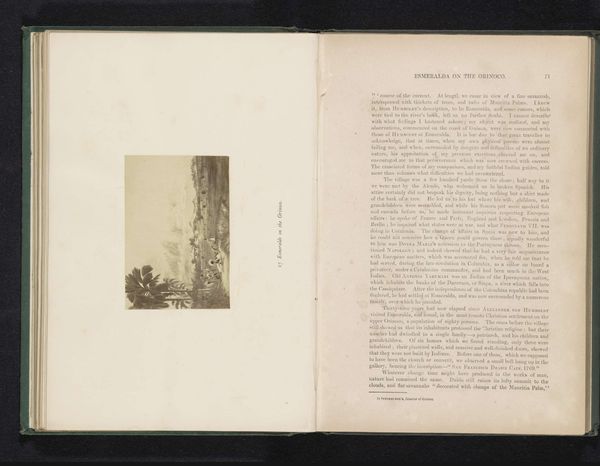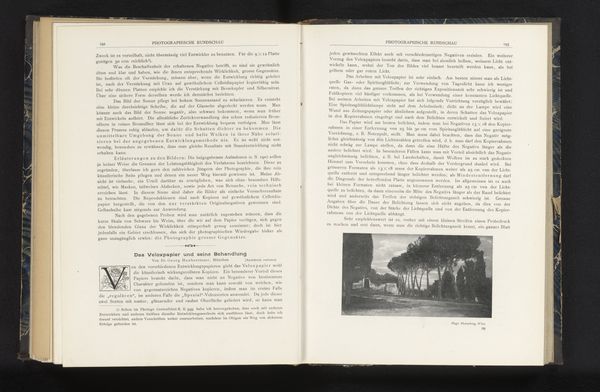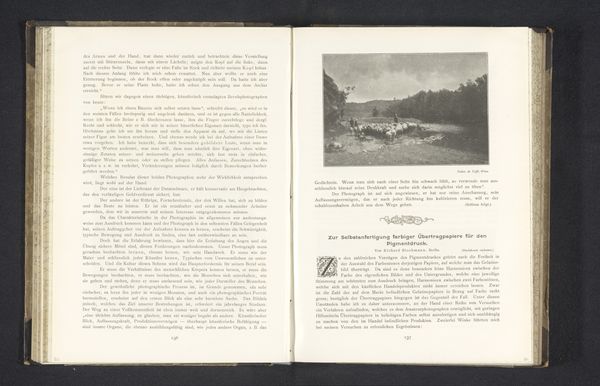
print, photography
#
pictorialism
# print
#
landscape
#
photography
#
monochrome
Dimensions: height 97 mm, width 149 mm
Copyright: Rijks Museum: Open Domain
Editor: We’re looking at a reproduction of a painting by Edmund Steppes, dating from before 1903. It’s reproduced in print form within what appears to be a photography journal or book. It's mostly monochrome and depicts a lakeside landscape. The dark tones give it quite a somber, contemplative feel. What strikes you about it? Curator: Immediately, the interplay between the tonal values commands attention. Notice how Steppes employs a subtle gradient, moving from darker foreground elements to the lighter, almost ethereal, horizon line. The composition itself, segmented into distinct horizontal bands, suggests a preoccupation with structure. Editor: Yes, there’s a real division between the land, water, and sky. But what does that division signify, beyond just landscape? Curator: Semiotically, we might consider how those bands function as signifiers. The earth perhaps anchoring the viewer, the water suggesting fluidity and transition, and the sky alluding to the transcendental. Observe, too, the strategic placement of the trees. Editor: You mean the row of trees acting like a barrier, but with irregular gaps? Curator: Precisely. Are they framing the composition, or obscuring a deeper truth? This question of intentionality is vital. Furthermore, consider the print's materiality – how the ink itself, the grain of the paper, contribute to the work's overall aesthetic effect. Editor: So, by looking at the structure and materiality, we can almost bypass needing historical context? Curator: Not bypass entirely, but certainly foreground the intrinsic qualities. Before ascribing external meaning, we must understand how the formal elements themselves generate meaning. Have we unlocked a different understanding of the landscape through this close consideration? Editor: Definitely. I’m now noticing elements that I would have previously glossed over. Curator: Then the exercise has proven fruitful.
Comments
No comments
Be the first to comment and join the conversation on the ultimate creative platform.
